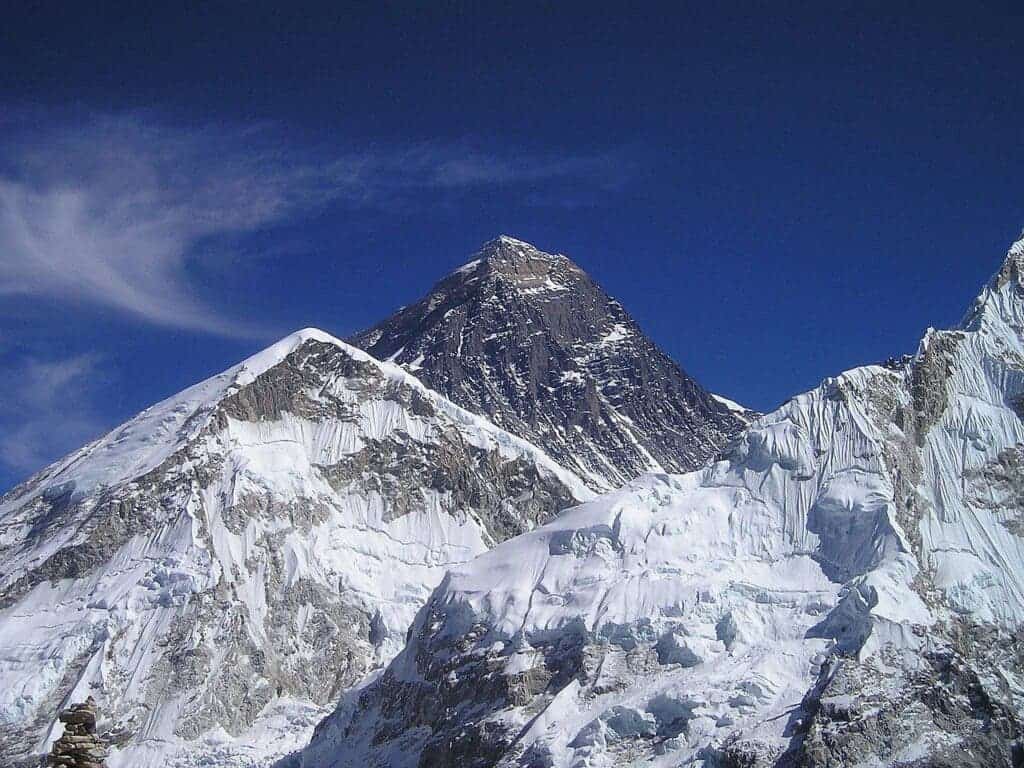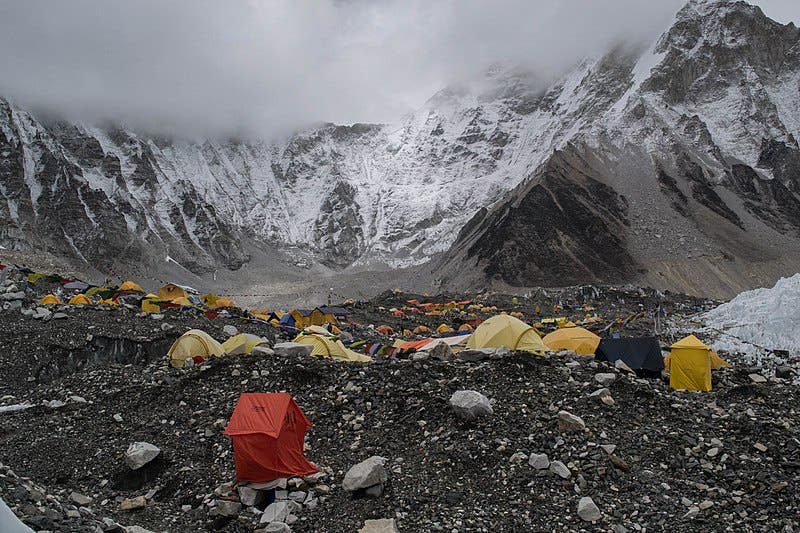Climbers aiming for Mount Everest might soon have to face a more difficult route as Nepal is planning to relocate its base camp almost 400 meters lower — and it’s all due to climate change.

Everest is located on the border of Nepal and China and is home to two camps on opposite sides of its base. The south base camp is on the Khumbu glacier, considered the world’s tallest. But even this remote, high-altitude glacier isn’t safe from climate change. A 2018 study found that the ice is thinning at a rate of one meter per year and according to the Nepal government, it’s no longer safe as a base camp.
“We are now preparing for the relocation and we will soon begin consultation with all stakeholders,” Taranath Adhikari, director-general of Nepal’s tourism department, told the BBC. “It’s basically about adapting to the changes we are seeing at the base camp and it has become essential for the sustainability of the mountaineering business.”
Climate change kicks in
The base camp is now located 5,400 meters above the mountain’s snowline but the plan is to move it as much as 400 meters lower to an area where there’s no year-round ice. This follows the recommendations of a committee created by Nepal’s government that seeks to facilitate and monitor mountaineering in the very popular Everest region.

Most of the glacier is covered by debris, but there are also areas exposed to exposed ice, called ice cliffs — and it’s the melting of these ice cliffs that destabilizes the glacier. Scott Watson, one of the researchers from the 2018 study, told the BBC that increased rock falls and movement of melt-water on the glaciers can be dangerous for the hikers.
Local authorities have said that a stream in the middle of the base camp has been expanding and that cracks on the surface of the glacier are appearing more frequently. They have also reported loud noises frequently heard at base camp, caused by the ice moving or rocks falling. All this makes it growingly risky for people to camp there.
“It will not make it harder to climb but it will make it safer because we have to focus on sustainability,” Adhikari told Sky News, dismissing that a lower camp could put off climbers or make the mountain hard to summit. “If you can climb the mountain, but the next generation cannot, that is not good. We have to preserve the mountain.”
A study earlier this year found that the South Col, another glacier on Mount Everest, has shrunk 80 times faster than it formed. Around 55 meters (180 feet) of ice has already been lost, with researchers arguing the glacier could disappear in 25 years. Ice began to decrease in 1800 and increased in the 1950s, even faster since the 2000s.


